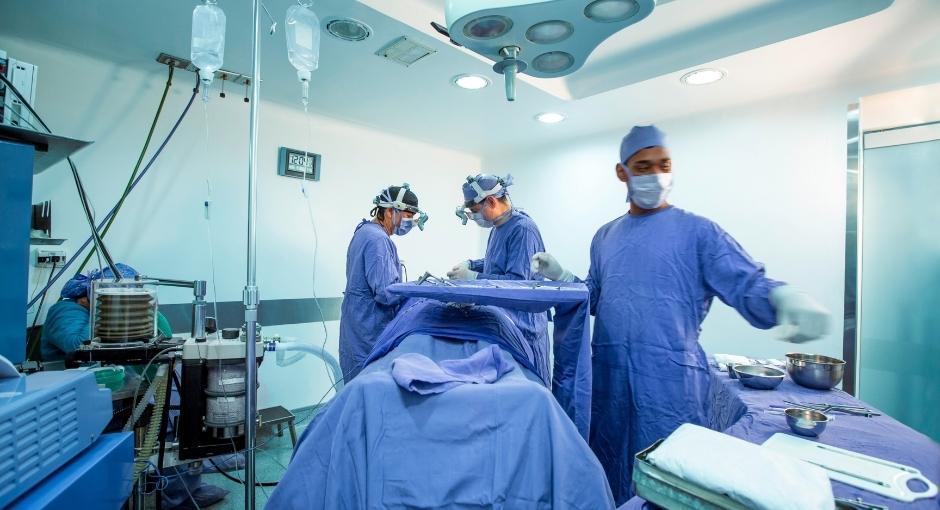Deep Brain Stimulation (DBS)

Deep brain stimulation (DBS) is a surgical therapy used to treat certain aspects of Parkinson’s disease (PD). This powerful therapy most addresses the movement symptoms of Parkinson’s and certain side effects caused by medications. DBS may also improve some non-motor symptoms, including sleep, pain, and urinary urgency. It is important to keep in mind that DBS can only help relieve symptoms, not cure or stop disease progression.
The U.S. Food and Drug Administration (FDA) approved DBS surgery in:
- 1997 to treat Parkinson’s tremor
- 2002 to treat of advanced Parkinson's symptoms
- 2016 for the earlier stages of PD — for people who have had PD for at least four years and have motor symptoms not adequately controlled with medication.
DBS is the most important therapeutic advancement since the development of levodopa. It is most effective for people who experience disabling tremors, wearing-off spells, and medication-induced dyskinesias, with studies showing benefits lasting at least five years. It is not right for every person with Parkinson’s, as many issues, such as those with speech, swallow, thinking, or gait freezing, do not consistently respond to DBS therapy.
Like all brain surgeries, DBS does carry a small risk of infection, stroke, bleeding, or seizure. DBS surgery may be associated with reduced clarity of speech or even slight changes in finding the right word. A small number of people living with PD have experienced cognitive decline after DBS surgery, most so if there are concerns regarding cognition prior to surgery.
It is important that a person with Parkinson’s considering DBS surgery be informed about the procedure and be realistic in his or her expectations.
How does DBS work?
In DBS surgery, electrodes are inserted into a targeted area of the brain, using MRI (magnetic resonance imaging) and, at times, recordings of brain cell activity during the procedure. A second procedure is performed to implant an impulse generator battery (called an IPG), which is similar to a heart pacemaker and approximately the size of a stopwatch.
The IPG is placed under the collarbone or in the abdomen and delivers an electrical stimulation to targeted areas in the brain that control movement. Those who undergo DBS surgery are given a controller to turn the device on or off and review basic parameters such as battery life.
DBS Facts
- DBS is a surgical procedure used to treat a variety of disabling neurological symptoms — most commonly the debilitating movement symptoms of Parkinson’s, such as tremor, stiffness, slowed movement, and slowed walking.
- DBS is not felt to damage healthy brain tissue or destroy nerve cells. Instead, the procedure is felt to interrupt problematic electrical signals from targeted areas in the brain.
- At present, the procedure is used only for people whose symptoms cannot be adequately controlled with medications.
The DBS System Consists of Three Components
Which brain targets should be used to implant the DBS lead?
- There are three brain targets that the FDA has approved for use in Parkinson’s: the subthalamic nucleus (STN) and the globus pallidus interna (GPi) are the most common.
- The target choice should be tailored to a person’s individual needs.
- There are many ongoing studies that will help refine target choice for individual people.
- Although the picture is not yet clear on the issue of target choice, the STN seems to provide more medication reduction, while GPi may be slightly safer for language and cognition.
FAQs
Page reviewed by Dr. Chauncey Spears, Clinical Assistant Professor and Dr. Amelia Heston, Movement Disorders Fellow at the University of Michigan.
Connect with a DBS Patient Ambassador
Gain real-life insights from unpaid volunteers who have undergone the procedure and are living with DBS to learn more about the therapy and inform your decision-making.
Related Materials
Related Blog Posts


What’s Hot in PD? Choosing Between Subcutaneous Apomorphine Infusions, Intestinal Pumps (Duopa) and Deep Brain Stimulation: Implications of the TOLEDO Trial
